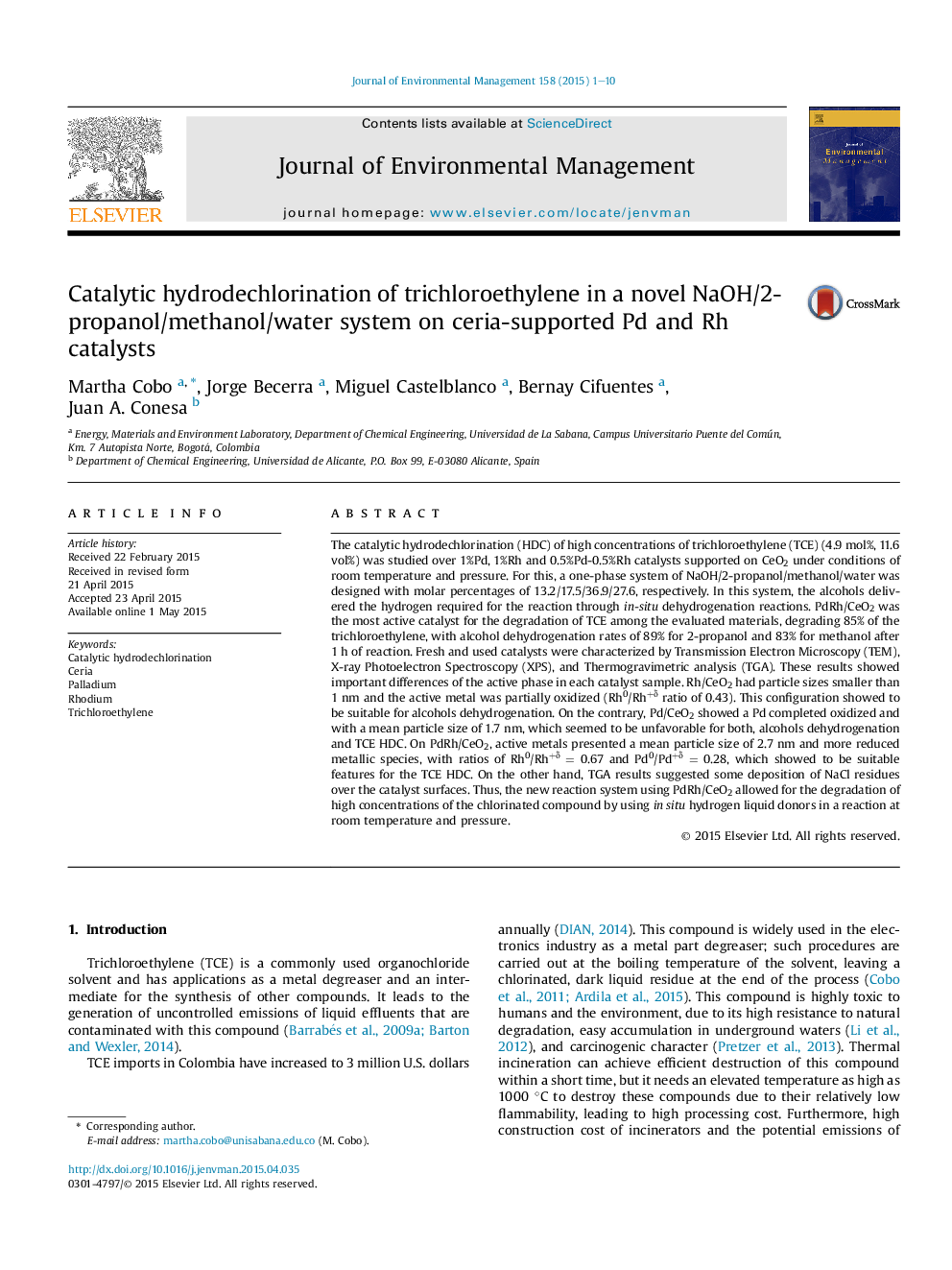| Article ID | Journal | Published Year | Pages | File Type |
|---|---|---|---|---|
| 1055573 | Journal of Environmental Management | 2015 | 10 Pages |
•Pd, Rh and Pd–Rh supported on CeO2 were evaluated as catalyst.•The reaction media was composed of NaOH/2-propanol/methanol/water.•A novel system with PdRh/CeO2 that degrades trichloroethylene was designed.•Larger active particle size (2.7 nm) promoted the hydrodechlorination reaction.•PdRh/CeO2 catalyst showed combination of reduced and oxidized active metal species.
The catalytic hydrodechlorination (HDC) of high concentrations of trichloroethylene (TCE) (4.9 mol%, 11.6 vol%) was studied over 1%Pd, 1%Rh and 0.5%Pd-0.5%Rh catalysts supported on CeO2 under conditions of room temperature and pressure. For this, a one-phase system of NaOH/2-propanol/methanol/water was designed with molar percentages of 13.2/17.5/36.9/27.6, respectively. In this system, the alcohols delivered the hydrogen required for the reaction through in-situ dehydrogenation reactions. PdRh/CeO2 was the most active catalyst for the degradation of TCE among the evaluated materials, degrading 85% of the trichloroethylene, with alcohol dehydrogenation rates of 89% for 2-propanol and 83% for methanol after 1 h of reaction. Fresh and used catalysts were characterized by Transmission Electron Microscopy (TEM), X-ray Photoelectron Spectroscopy (XPS), and Thermogravimetric analysis (TGA). These results showed important differences of the active phase in each catalyst sample. Rh/CeO2 had particle sizes smaller than 1 nm and the active metal was partially oxidized (Rh0/Rh+δ ratio of 0.43). This configuration showed to be suitable for alcohols dehydrogenation. On the contrary, Pd/CeO2 showed a Pd completed oxidized and with a mean particle size of 1.7 nm, which seemed to be unfavorable for both, alcohols dehydrogenation and TCE HDC. On PdRh/CeO2, active metals presented a mean particle size of 2.7 nm and more reduced metallic species, with ratios of Rh0/Rh+δ = 0.67 and Pd0/Pd+δ = 0.28, which showed to be suitable features for the TCE HDC. On the other hand, TGA results suggested some deposition of NaCl residues over the catalyst surfaces. Thus, the new reaction system using PdRh/CeO2 allowed for the degradation of high concentrations of the chlorinated compound by using in situ hydrogen liquid donors in a reaction at room temperature and pressure.
Graphical abstractFigure optionsDownload full-size imageDownload as PowerPoint slide
